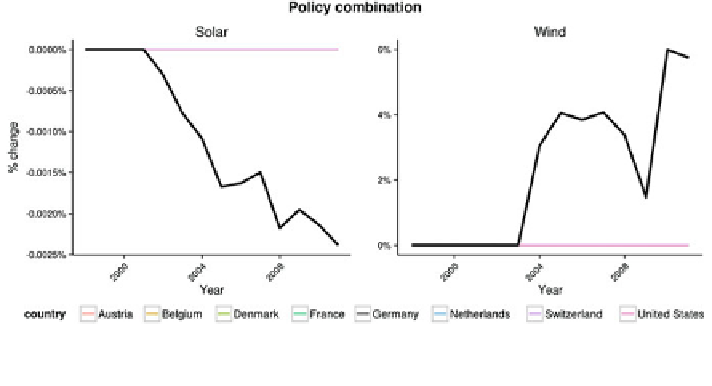Environmental Engineering Reference
In-Depth Information
Fig. 17 Predicted difference between a combined increase in deployment and RD&D on the RCA
in solar (
left
) and wind (
right
) in Germany compared to the sum of the individual effects
turbines above the baseline by about 4 % on average per year. In the case of solar
panels, the joint policies would lead to a very small (less than 0.0025 %) decrease in
RCA score; however, as in the case of RD&D alone, it is unclear whether this
difference is signi
cant. These results could loosely be restated as an increase in
relative exports of wind turbines and a tiny decrease in relative exports of solar
panels. However as outlined above, we would expect these policies to play only a
small role in explaining overall changes in export competitiveness. What they do
demonstrate clearly, and suggest as an avenue for further research, is a strong
difference in how deployment and RD&D affect competitiveness in the given re-
newables
elds (positively and signi
cantly in the one case, ambiguously and close
to insigni
cantly in the other) and the need to disentangle the joint effects for clear
policy prescriptions on the choice of domestic renewables support and export
competitiveness (Fig.
17
).
4 Discussion
Our results suffer from a number of potential drawbacks:
Additional explanatory variables and controls for locational factors (sun, wind
conditions), neighbouring country effects, interaction terms, non-linear rela-
tionships and others could make sense.
Our econometric approach does not allow us to fully explore the potentially
complex interactions between the analysed variables. Whether a certain factor
such as
is a true cause, or just an intermediate
variable itself being caused by past knowledge stock and RD&D activities cannot
be properly disentangled. In the same vein we cannot separate cause-and-effect
'
deployment in the past 5 years
'

Search WWH ::

Custom Search